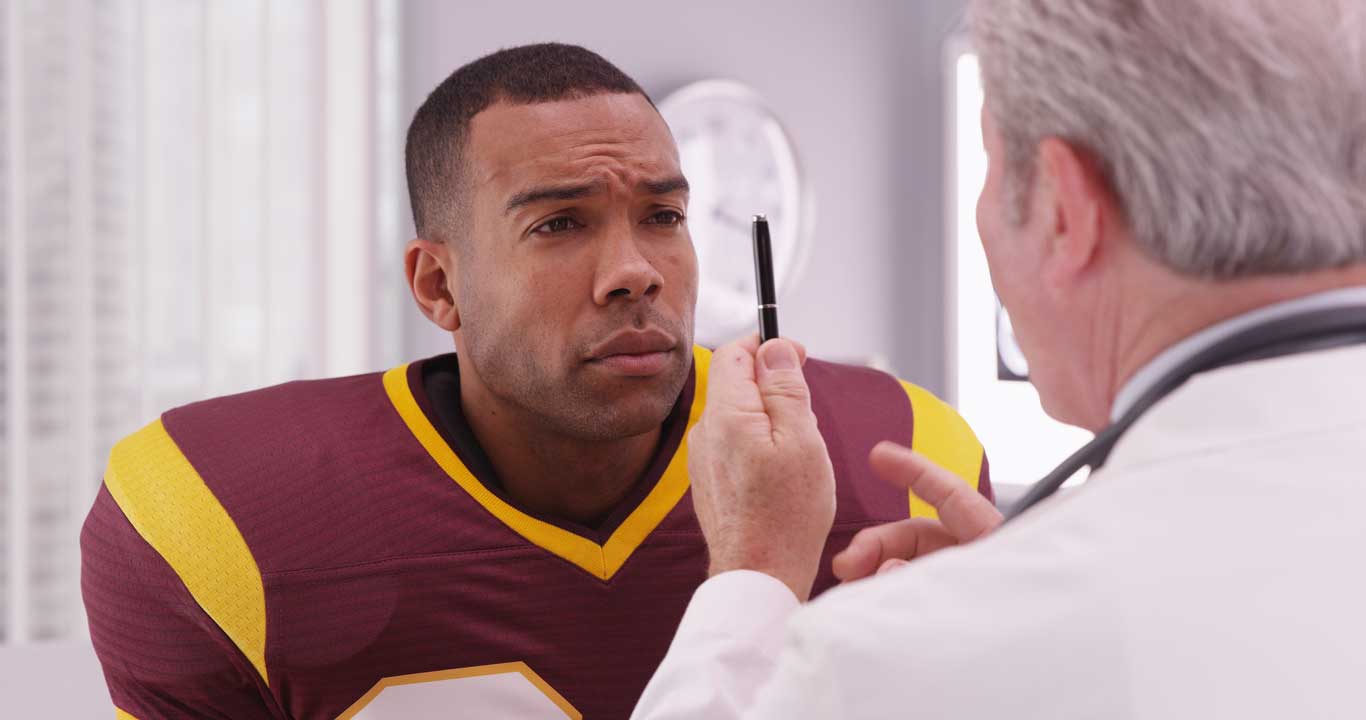Sports Vision Training and Vision Therapy

Sports Vision Training and Vision Therapy
We are Sports Vision Specialists

Sports Vision Training is an aspect of Vision Therapy that can improve sports performance and enjoyment for anyone from clumsy children to professional athletes. We are experienced eye doctors in Sports Vision Training and really enjoy using the tools and technologies of our profession to help people make measurable gains in this area of their lives.
We help children who are really struggling with eye-hand-body coordination and visual motor skills. We also thoroughly enjoy helping amateur and professional athletes advance their skills.
What is Sports Vision Training?
Although vision impaired individuals can do well in selected sports, most sports rely heavily on excellent vision for good or best performance. As experienced Sports Vision Training providers, we see vision as a primary to sports achievement and we know that an athlete's visual skills can be vastly improved and enhanced by the types of conditioning and eye exercises that our Sports Vision Training programs provide. And better vision leads to better performance in sports.
Here are some of the many visual skills that are improved through Sports Vision Training.
-
Visual Acuity at All Distances (Adaptable Clear Vision)
Do the two eyes maintain clear vision at varying distances at all times? Clear vision at all distances is important to sports success. -
Eye Focusing Skills - Shifting and Sustaining Sharp Vision
Do the two eyes shift and sustain focusing power quickly and easily? Accurate eye focusing skills are a big boon for an athlete in any game with moving objects and/or players, especially in a fast-paced game. Sports Vision Training can enhance focusing power, agility, and speed. -
Eye Tracking, Eye Teaming, and Eye Movement Skills
Do the two eyes aim, move, and work as an effective coordinated team? Fast, fluid, binocular vision with coordinated eye movements and smooth eye tracking skills are essential to success in sports. Sports Vision Training conditions all of these visual skills simultaneously. -
Depth Perception
Good binocular depth perception enables accurate assessment of relative distances, such as where the athlete's body is in relation to other objects or people. Sports Vision Training can increase and stabilize binocular depth perception. -
Peripheral Vision and Awareness
Widening your peripheral field of vision and peripheral awareness allows a better perception of action, motion, space, and objects to the sides of your eyes and body without having to move your eyes in that direction. In other words, you can perceive what is happening around you without having to move your eyes away from a single focal point or visual target.
Good or heightened peripheral vision and awareness add greatly to sports performance, such as in team sports. In addition, good peripheral vision contributes greatly to a well functioning vestibular system (good balance).
Sports Vision Training vs. Vision Therapy for Sports? What’s the Difference?
Sports Vision Training and Vision Therapy can utilize similar eye exercises, activities, and training tools. Typically, Sports Vision Training is the term used for vision training that is provided to amateur and professional athletes for sports performance enhancement. Vision Therapy focuses, first and foremost, on the correction of weaknesses in a patient’s visual-motor and/or sensory processing skills. Yes, correction and strengthening of these deficiencies frequently leads to sports performance enhancement, however with Vision Therapy the goal is always overall improvement of the patient’s visual function and life skills. Both Sports Vision Training and Vision Therapy can make a huge difference in other areas of a person’s life, not just sports performance.
What is Vision Therapy / Sports Vision Training?
Relationship Between ADD ADHD and Convergence Insufficiency
What is Convergence Insufficiency Disorder? Symptoms, Diagnosis, Treatment, etc.
What is Intermittent Exotropia (Strabismus) scaused by Convergence Insufficiency?
Reading Problems with Convergence Insufficiency, Eye Tracking Problems, Esophoria or Exophoria
Dizziness, Motion Sickness, Eye Strain, Stomachaches, Double Vision...
Eye Exercises for Eye Strain, Eye Fatigue (Computer Work and Reading)
Relief from Frequent or Chronic Headaches, Visual Stress, Eyestrain, and/or Stomachaches during or after Reading, School or Office Work.
Read these parent and patient reviews and success stories about Sport Vision Training:



